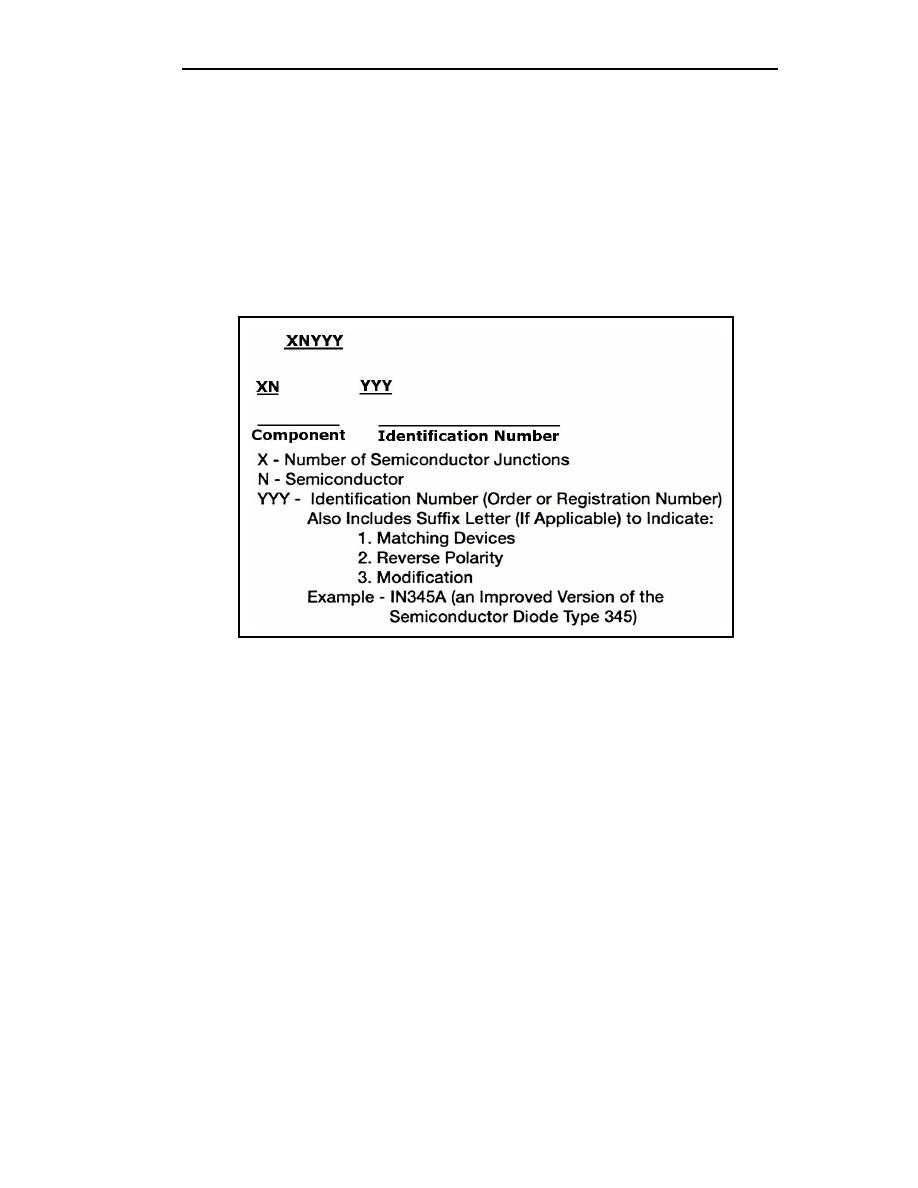
TC 9-62
Therefore, 1 designates a diode; 2 designates a transistor (which may be considered as
made up of two diodes); and 3 designates a tetrode (a four-element transistor). The letter
"N" following the first number indicates a semiconductor. The 2- or 3-digit number
following the letter "N" is a serialized ID number. If needed, this number may contain a
suffix letter after the last digit. For example, the suffix letter "M" may be used to describe
matching pairs of separate semiconductor devices or the letter "R" may be used to indicate
reverse polarity. Other letters are used to indicate modified versions of the device that can
be substituted for the basic numbered unit. For example, a semiconductor diode designated
as type 1N345A signifies a two-element diode (1) of semiconductor material (N) that is an
improved version (A) of type 345.
Figure 1-25. Semiconductor Identification System
1-96. When working with different types of diodes, it is also necessary to distinguish one
end of the diode from the other (anode from cathode). To do this, manufacturers generally
code the cathode end of the diode with a "k", "+", "cath", "color dot or band", or by an
unusual shape (raised edge or taper) (see Figure 1-26). Sometimes, standard color code
bands are placed on the cathode end of the diode. This serves two purposes:
To identify the cathode end of the diode.
To identify the diode by number.
1-97. Figure 1-27 shows the standard diode color code system. The ID number for a
diode with a brown, orange, and white band at one terminal (with brown being a "1",
orange a "3", and white "9"), would be identified as a type 139 semiconductor diode, or
specifically 1N139. Remember, whether the diode is a small crystal type or a large power
rectifier type; both are still represented schematically by the schematic symbol as shown in
Figure 1-12.
1-30
TC 9-62
23 June 2005



 Previous Page
Previous Page
